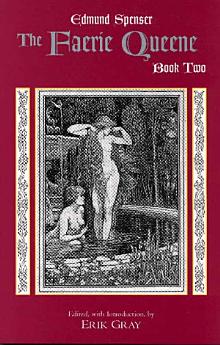The Faerie Queene, Book Two
2006年9月 · Hackett Publishing
電子書
288
頁
family_home
符合資格
info
report評分和評論未經驗證 瞭解詳情
關於本電子書
From its opening scenes--in which the hero refrains from fighting a duel, then discovers that his horse has been stolen--Book Two of The Faerie Queene redefines the nature of heroism and of chivalry. Its hero is Sir Guyon, the knight of Temperance, whose challenges frequently take the form of temptations. Accompanied by a holy Palmer in place of a squire, Guyon struggles to subdue himself as well as his enemies. His adventures lead up to a climactic encounter with the arch-temptress Acrasia in her Bower of Bliss, which provides the occasion for some of Spenser's most sensuous verse. With its mixture of chivalric romance, history, and moral allegory, Book Two succeeds in presenting an exuberant exploration of the virtue of self-restraint.
關於作者
"The poet's poet"---as Charles Lamb was to call Spenser two centuries later---was born in London, where he attended school before going to Cambridge in 1569. About 1579 he came to know Sir Philip Sidney; his first significant work, The Shepheardes Calendar, published under a pseudonym in 1579 and consisting of 12 "ecologues" (one for each month of the year), was dedicated to Sidney. Spenser hoped for advancement at the court of Queen Elizabeth, but in August 1580 he took a minor position in Ireland, where he spent the rest of his life, save for two visits to England. In 1594 he married Elizabeth Boyle, in Cork; the sonnet sequence Amoretti (1595) bears on his courtship, and the great marriage hymn, Epithalamion (1595), celebrates the wedding. The first three books of Spenser's allegorical epic romance,The Faerie Queene, appeared in 1590; three more appeared in 1596. A fragment, the Cantos of Mutabilitie, which may or may not have been intended to form part of the great poem, appeared in 1609, after Spenser's death. Spenser appended a letter to his friend Sir Walter Raleigh to the edition of 1590, explaining that the "general end...of all the book is to fashion a gentleman or noble person in vertuous and gentle discipline." Although Spenser planned to write 12 books in all, only 6, and the two Cantos of Mutabilitie, survive. The rest may possibly have been destroyed by Irish rebels when, in 1598, they sacked Spenser's Irish residence at Kilcolman, but it is equally possible that the poet never managed to bring his massively planned work to completion. Spenser's Amoretti (1595) is one of the more idealized sonnet sequences, and Colin Clout's Come Home Again (1595) is an allegorical attack on the taste of the court. Like many Renaissance authors, his writings extend beyond the narrowly literary; his tract "A View of the Present State of Ireland" (1596) provides a series of brutal recommendations for the colonial suppression of England's Irish territories. Spenser's complex range of styles and genres served as both a model and a challenge for his contemporaries and for later authors.
為這本電子書評分
歡迎提供意見。
閱讀資訊
智慧型手機與平板電腦
筆記型電腦和電腦
你可以使用電腦的網路瀏覽器聆聽你在 Google Play 購買的有聲書。
電子書閱讀器與其他裝置
如要在 Kobo 電子閱讀器這類電子書裝置上閱覽書籍,必須將檔案下載並傳輸到該裝置上。請按照說明中心的詳細操作說明,將檔案傳輸到支援的電子閱讀器上。






